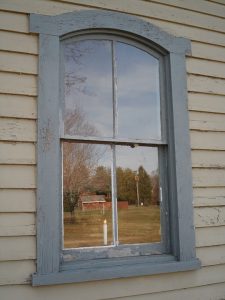 Whether you want to add a new color to your home, protect the exterior of your building, or add curb appeal, siding Installation is an important process. The process of replacing siding can be tricky, but it is easy if you follow some basic guidelines. To start, you must first prepare the walls for the new material. Once the walls have been prepared, install the trim around windows and exterior doors. You can also install J-channel around windows and doors, but be careful not to nail too deeply. Afterward, measure the distance between the vertical trim pieces, and then cut your siding panels. Once you’ve measured this distance, you’ll need to apply the starter strip. Be sure the starter strip is level, and then nailed every sixteen inches.
Whether you want to add a new color to your home, protect the exterior of your building, or add curb appeal, siding Installation is an important process. The process of replacing siding can be tricky, but it is easy if you follow some basic guidelines. To start, you must first prepare the walls for the new material. Once the walls have been prepared, install the trim around windows and exterior doors. You can also install J-channel around windows and doors, but be careful not to nail too deeply. Afterward, measure the distance between the vertical trim pieces, and then cut your siding panels. Once you’ve measured this distance, you’ll need to apply the starter strip. Be sure the starter strip is level, and then nailed every sixteen inches.
Siding Installation should start with the roof. If you’re installing it on a new construction, you’ll need to raise the starter edge of the top row so it will fall where you want it. To make the top row flat, you’ll need a J-channel or utility trim. A 3-inch strip of 1/2-inch plywood can be used to nail against this trim. Once you’ve installed the siding, you’ll be ready to start installing the fascia and shingles.
You’ll need to clear the driveway and move vehicles away from the site. After that, you’ll need to remove old siding, remove all caulking and downspouts, and put down new siding. Before the installation begins, you should trim the trees around the home and trim the grass so that the contractors can find nails. You should also remove anything from the exterior of the house, such as potted plants or other decor.
After installing the siding, you’ll need to install a starter strip on the bottom of each panel to hook the first row of siding. You can mark the beginning of the first row with a chalk line, or you can use a pencil to draw a line on the bottom of the home. Then, follow it with the other courses of siding. Then, you’re ready to install the fascia and shingles.
Remember that extreme cold doesn’t make it easier to do the installation. Vinyl is brittle and can crack when nailed down. So, if you don’t want to deal with this problem, consider hiring a professional for the job. If you’re feeling confident with your skills, the task isn’t too difficult. However, if you don’t feel confident with DIY work, consider hiring a professional.
When installing vinyl siding, you should leave room for expansion and contraction. If you have a lot of unevenness, add some extra siding to the bottom of the wall to make the project easier. If the siding is uneven, face-nailing the panels may create ripples in the siding. If the overlaps are too wide, furring is necessary. If you are using a vinyl siding, it’s important to pay special attention to the overlaps at the corners.
Before applying siding to your home, ensure that the interior walls are safe. Before installing the first row of siding, secure the plywood to the bottom of the home. Once the plywood is in place, you should install a metal starter strip. It is important to nail this piece to the wall to avoid cracks. After that, add a second row of siding. Then, make sure that the first row is level. Once the first row is complete, you should repeat the process.
Once you’ve decided on the material, you’ll need to estimate the square footage. Estimating the square footage of your home is easy. You can multiply the length and width by 144 and add them up. Next, you need to add up the length and width of each section. Finally, you need to paint the siding once it’s done. After this, the project should be completed. This will extend the time. You should also consider the type of material and color of the siding.
Siding installation is a complex task that requires a lot of preparation and skill. Once you have decided on the style and colors of the siding, the contractor should cut the panels to the right lengths and install them one by one. If the walls are weakened, the contractor should repair them to ensure that they are structurally stable and can support the new surface. As a final step, the siding installation crew should paint and caulk the surfaces.